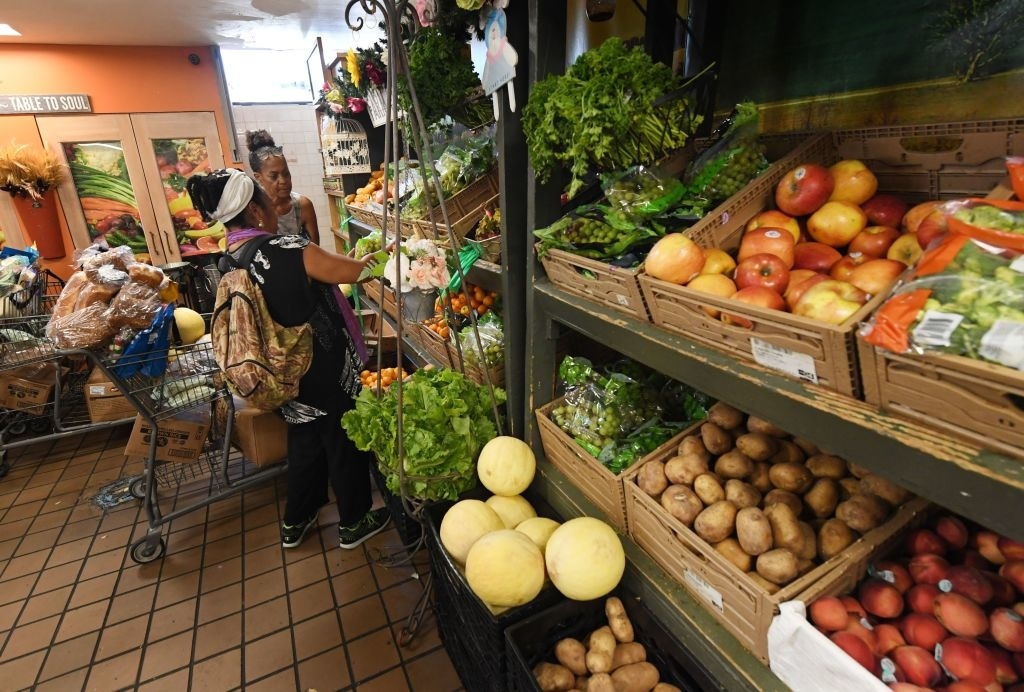An anti-inflammatory diet now can protect your brain from dementia later

Every year you can expect a slew of new “guaranteed diet” books for weight loss, brain health, aging, spiritual well-being, and general lifestyle. There’s the vegan one, the raw meat one, the low-fat one, the high-fat one, the juice-from-fruits-picked-during-a-full-moon one, the blood type one, and the one based on your latest tarot card reading. It becomes quite confusing. Authors confuse a little information with knowledge, then try to translate that into sales.
There are too many factors to factor in to a proper diet. Serious nutritionists recognize that good health requires a nuanced understanding of individual genetics, environment, and gut microbiome. Then there’s the speed you consume your food, the types of sugar you eat—in juice or whole fruit, in which the fiber plays a critical role—then the types of fat you digest, and stress levels.
Let’s pause on that last one for a moment, as stress is rampant. An overtaxed body is an inflamed body. A recent study investigating the role of inflammation in regards to brain health and dementia is worth considering. It’s not the only factor in a good diet, but it is a crucial one.
A team at Columbia University Medical Center, led by neuropsychologist and epidemiologist Yian Gu, studied the cognitive performance of 330 elderly adults to see if the Mediterranean diet—one of the longer-lasting and most-studied diets in the world—could lower their risk of diseases of dementia, including Alzheimer’s. All adults involved did not suffer from dementia during the course of the study.
Gu points out numerous studies have shown that this diet, which is fish- and poultry-heavy with an emphasis on whole grains, fruits, olive oil, vegetables, and moderate alcohol intake, offers protection against the development of Alzheimer’s. Gu wanted to know if this is due to a decrease in inflammatory biomarkers in the subject’s brain.
The result was yes, decreased inflammatory markers were prevalent in those who ate this diet. They also had better visuospatial cognition, thanks to nutrients such as vitamins B1, B2, B5, B6, D, and E, as well as higher intake of omega 3-fatty acids, calcium, and folate. Gu notes:
This study suggests that certain nutrients may contribute to the previously observed health benefits of some foods, and anti-inflammation might be one of the mechanisms. We hope to confirm these results in larger studies and with a wider range of inflammatory markers.
To understand why lower inflammation helps overall health and aging I emailed Drew Ramsey, also at Columbia University. The psychiatrist, Big Think expert, and author of numerous books, including Eat Complete, told me:
Inflammation is how our body deals with stress and injury. Today, most people eat a diet and have a lifestyle that promotes incredible stress via excess sugars, eating the wrong fats, and losing the sense of joy that food should give us. Currently, inflammation is considered a major factor in the development of depression, dementia, and other brain disorders. People should worry about inflammation because it is contributing to the degradation of their health.
This is especially important as we age. As Gu and team write in the study, Alzheimer’s is the leading cause of dementia worldwide, and is the most common neurodegenerative disorder. While medical interventions help us live longer that does not always translate to healthier. We can overcome cancer and heart surgery and survive longer with AIDS and type 2 diabetes, but quality of life is greatly compromised when suffering from dementia. The strain on family and friends can be overwhelming.
Which is why it’s important to start interventions earlier in life. Most of what is sold in packages is not food, but a combination of food-like substances preserved by unpronounceable chemistry. Sugars and unhealthy fats hide, disguised by numerous names, slowing transforming our microbiome in ways that degrade health. And it’s not only visceral fat, body mass index, and heart disease we need to worry about. Without healthy cognition the very concept of “I” disintegrates. The so-called golden years are effectively meaningless if you can’t remember them.
While studies like Gu’s remind us of the bigger picture, Ramsey suggests taking it meal by meal. When I ask him how people can implement changes in their diets now, he expresses skepticism about considering the long game. Change starts at the dinner table tonight, he says.
People don’t get motivated by “long term benefits” or “risk reduction.” We have the most success in our clinic when we encourage patients to make better food choices at their next meal. We find that there are very rapid effects when people switch from modern Western food to nutrient dense whole foods (which are also brain food). Sure, eating more avocados can decrease dementia risk, but encouraging patients to eat more avocado toast and guacamole is more compelling when it comes to behavioral change.
Gu knows that one study does not change a discourse. But the combination of better understanding the microbiome and the effects of decreasing inflammation is too prevalent to deny. The Mediterranean diet offers a simple lesson applicable globally, to eat seasonal fresh foods and enjoy moderate amounts of alcohol. Such an approach worked for our species for millions of years until the advent of refrigeration and industrial processing. And we know it works now. We just have to implement it, be it through the recognition of cognitively strong aging or, as Ramsey suggests, hitting the produce aisle for dinner tonight.
—
Derek is the author of Whole Motion: Training Your Brain and Body For Optimal Health. Based in Los Angeles he is working on a new book about spiritual consumerism. Stay in touch on Facebook and Twitter.





